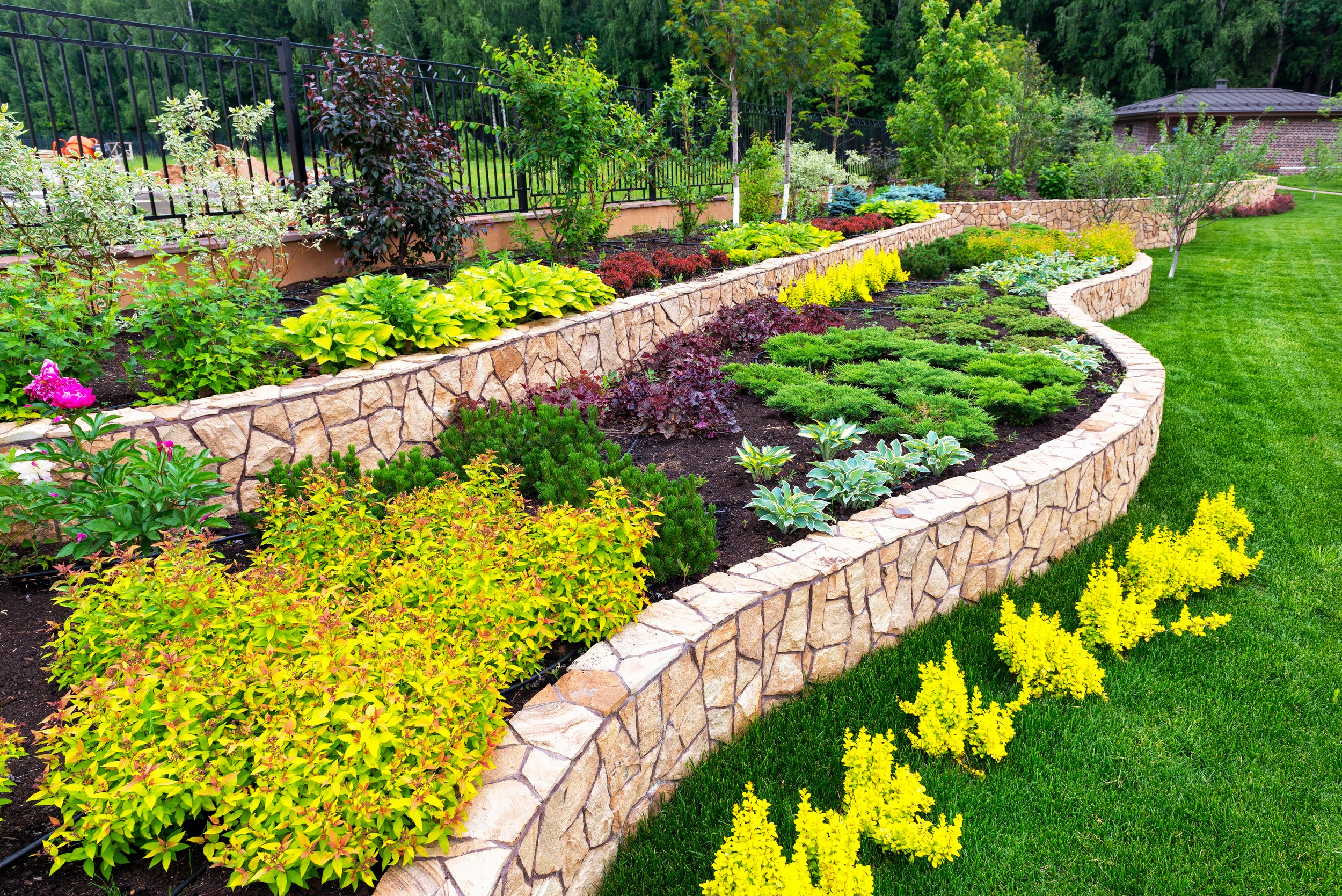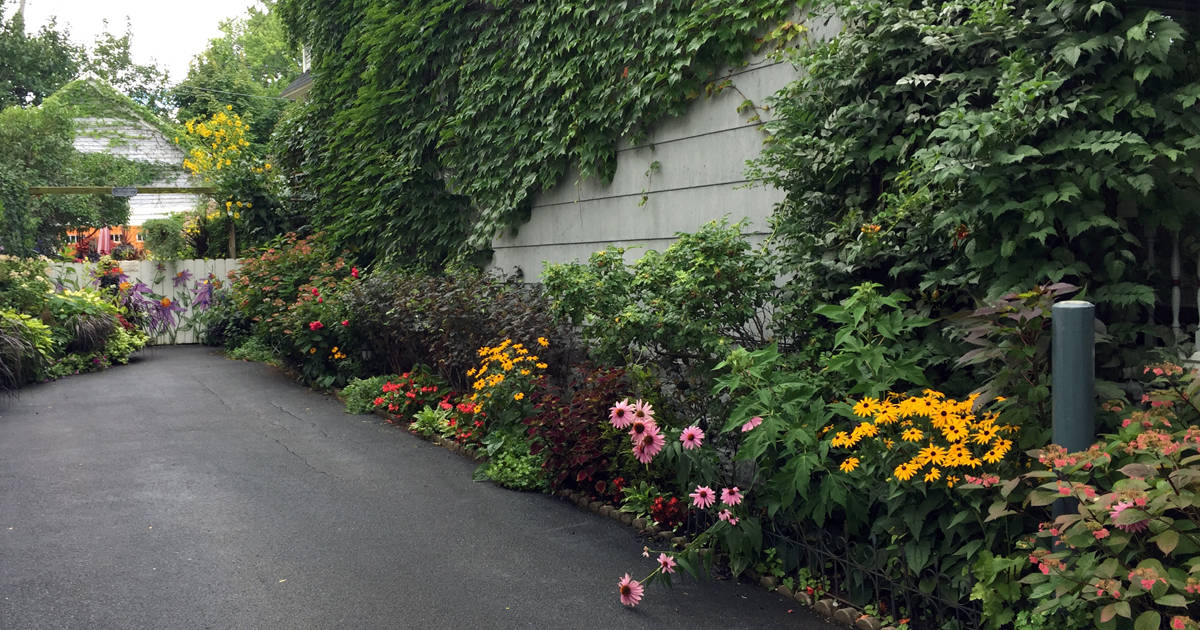The Definitive Guide to Hilton Head Landscapes
The Definitive Guide to Hilton Head Landscapes
Blog Article
Hilton Head Landscapes - Truths
Table of Contents9 Simple Techniques For Hilton Head LandscapesAn Unbiased View of Hilton Head LandscapesHilton Head Landscapes Fundamentals ExplainedHilton Head Landscapes for BeginnersHow Hilton Head Landscapes can Save You Time, Stress, and Money.The Ultimate Guide To Hilton Head LandscapesThe Ultimate Guide To Hilton Head LandscapesSome Ideas on Hilton Head Landscapes You Need To Know
Form compatibility is also a major component of unity in designone or 2 strikingly different forms are good for contrast and emphasis, however normally all various other types must have some resemblances for a linked appearance. Appearance describes exactly how crude or fine the surface of the plant or hardscape product feels and/or looks.
Instances of plants with coarse appearance include philodendrons, agaves, bromeliads, hollies, hands, and hydrangeas. Characteristics that develop fine texture include small foliage; thin, strappy fallen leaves (grasses) or tall, slim stems; tiny, thick twigs and little branches; long stems (vines); and little, delicate blossoms.
Some Known Incorrect Statements About Hilton Head Landscapes
A lot of plants are moderate texture, in that they can not be called having either rugged or great appearance. They are characterized by medium-sized fallen leaves with straightforward forms and smooth edges. The average-sized branches are not largely spaced neither extensively spaced, and the total type is typically rounded or mounding. Medium-textured plants serve as a history to web link and unify the coarse- and fine-textured plants.

To make a room really feel smaller sized, place the rugged appearances along the external border and the great appearances closest to the visitor. The detail of the coarse appearance makes the plants show up closer and makes the room really feel smaller. The viewed structure of plants can additionally change with the distance from the plant.
The Best Strategy To Use For Hilton Head Landscapes
Vibrant colors increase the contrast and make the texture show up coarser, while soft colors can flatten appearance. Hardscape with a rugged texturesuch as very rough rocks and vibrant, big timberstends to make all plant material appear much more medium distinctive. Developers typically establish a texture research (Number 8) on paper to aid determine the arrangement of plant products.
Color in plant product and hardscape adds interest and selection to the landscape. Color is the most noticeable component in the landscape and is usually the focus of a lot of home owners; nevertheless, it is also the most momentary aspect, usually lasting only a couple of weeks a year for individual plants.
4 Simple Techniques For Hilton Head Landscapes
A straightforward description of the color wheel includes the three main shades of red, blue, and yellow; the three secondary colors (a mix of 2 primaries) of environment-friendly, orange, and violet; and 6 tertiary shades (a mix of one adjacent main and additional color), such as red-orange. Color concept explains the relationship of shades to every other and exactly how they ought to be utilized in a make-up.

Analogous (in some cases called unified) color schemes are any 3 to 5 shades that are adjacent on the color wheel, such as red, red-orange, orange, yellow-orange, and yellow, or blue, blue-violet, and violet (Landscapers near me). The shades are relevant per various other since they normally consist of 2 primaries blended to create a secondary and two tertiary shades, which means they share common residential properties
They tend to have high contrast in between them. The most usual sets are violet and yellow, red and environment-friendly, and blue and orange. Corresponding shades are often located normally in blossoms; a typical set is yellow and violet. Shade is located in the blossoms, foliage, bark, and fruit of plants.
The Best Strategy To Use For Hilton Head Landscapes
Green vegetation in all its various shades is the dominant color by quantity, yet other shades capture focus quicker as a result of their high comparison to the color green. Shade is also discovered in buildings, rocks, pavers, timber, and furniture. The majority of colors in all-natural materials, such as rock and wood, are normally muted and often tend to be variations of brown, tan, and pale yellow.
Color is a vital element for producing rate of interest and variety in the landscape. Colors have homes that can impact feelings, spatial perception, light high quality, balance, and focus. One property of color is explained family member to temperaturecolors appear to be trendy or warm and can affect emotions or feelings. Great shades often tend to be relaxing and need to be used in locations for leisure and tranquility.
Not known Details About Hilton Head Landscapes
The "temperature" of shades can additionally impact the understanding of range. Cool shades have a tendency to recede and are viewed as being farther away, making a space really feel larger. Cozy shades tend to advance and are viewed as being better, making a space really feel smaller. Shade can likewise be used to catch focus and direct sights.
As an example, brilliant yellow, which has the highest possible strength, also has a high contrast with all various other colors (frequently referred to as a "pop" of color) and must be made use of sparingly. A little quantity of intense color has as much aesthetic weight as a large amount of a much more subdued or weak shade.
Analogous (sometimes called harmonious) color pattern are any 3 to 5 colors that are adjacent on the color wheel, such as red, red-orange, orange, yellow-orange, and yellow, or blue, blue-violet, and violet. The shades belong to each other since they commonly consist of two primaries mixed to create a secondary and two tertiary colors, which means they share typical residential or commercial properties.
Hilton Head Landscapes Fundamentals Explained
They often tend to have high comparison between them. The most common sets are violet and yellow, red and green, and blue and orange. Complementary colors are typically discovered naturally in read this post here flowers; an usual set is yellow and violet. Color is discovered in the flowers, vegetation, bark, and fruit of plants.
Eco-friendly vegetation in all its different shades is the dominant color by amount, but other shades catch attention extra conveniently due to their high contrast to the shade eco-friendly - landscape design hilton head - https://scriaoll-troos-gaerk.yolasite.com. Shade is additionally discovered in buildings, rocks, pavers, timber, and furniture. Many colors in all-natural products, such as stone and wood, are generally low-key and have a tendency to be variants of brown, tan, and light yellow
The 5-Minute Rule for Hilton Head Landscapes
Shade is a crucial component for creating passion and variety in the landscape. Shades have residential or commercial properties that can influence feelings, spatial assumption, light quality, balance, and emphasis. One home of shade is defined relative to temperaturecolors seem trendy or warm and can affect emotions or feelings. Trendy colors tend to be soothing and must be made use of in areas for relaxation and calmness.
Great shades have a tendency to decline and are regarded as being further away, making a space really feel bigger. Shade can also be used to record interest and direct views - https://triberr.com/h1tnhdlndscps.
Bright yellow, which has the highest possible intensity, also has a high comparison with all various other colors (often described as a "pop" of shade) and ought to be used sparingly. A percentage of extreme color has as much visual weight as a big amount of an extra restrained or weaker shade.
Report this page